It is well known that the red rose is a symbol of love and passion. But where does this impressive […]
Sunflowers
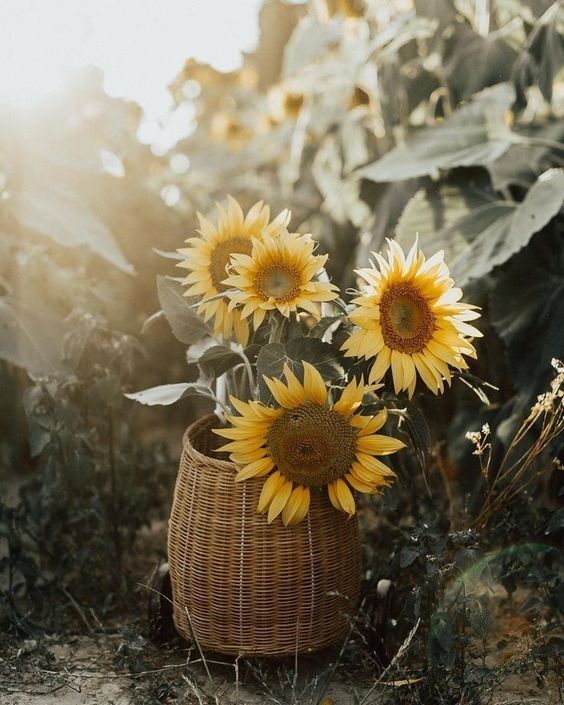
Nothing says summer quite like sunflower and their warm colors! These flowers are great for bringing a real touch of summer to any bouquet. Bright and cheery, these iconic colors look just like miniature suns. There's no better flower for spreading summer cheer, and we love incorporating them into our flower arrangements and bouquets.

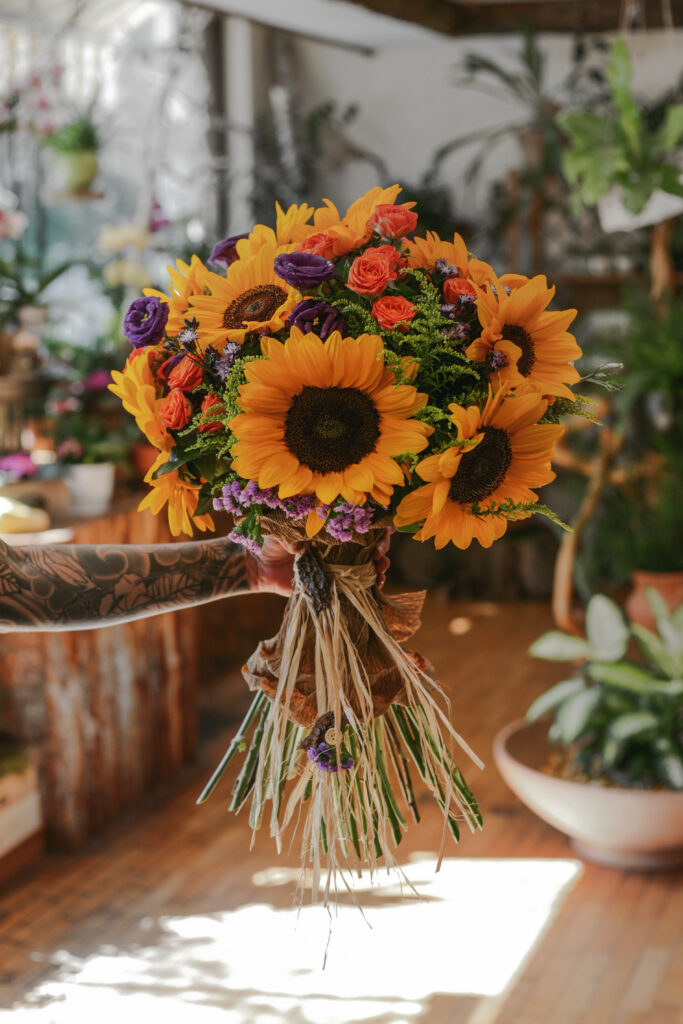

There are many types of sunflowers and they are very different in size. From small to large, yellow to red, sunflowers are known as happy flowers and their sunny faces are guaranteed to bring joy to anyone who has the pleasure of enjoying them. They are one of the brightest stars in a garden and have been around for many years.
Origin
Sunflowers are native to North America and have been cultivated for over 4,500 years. This is partly because the entire sunflower plant is edible, from the leaves to the stems and roots. Sunflowers were grown for food even before crops like corn. Sunflower seeds were an important food for Native Americans, as they ground the seeds into meals and made bread and porridge from them. Oil was extracted from the seeds of the sunflower, which they used for their hair and skin, and with the husks of the seeds, they created dye for clothes.
Sunflowers were also important to the ancient Inca people. They considered them a symbol of the sun and used them as part of their worship in the temples.
In Greek mythology, the sunflower is often associated with the myth of Cliti and Helios. Cliti is a water nymph and is deeply in love with the God of the Sun - Helios, who abandons her for another goddess. Clytes watched Helios across the sky in his golden chariot for days, without food or water. Eventually, she was transformed into a sunflower, and it’s said this is why sunflowers always face the sun.
Interesting facts
- Not only do sunflowers resemble miniature suns, but their blooms also follow the sun across the sky. They have their own biological clocks that help them follow the sun as it moves from east to west during the day and then returns to its original position at night. However, they only do this as young plants as it helps them grow properly and quickly. Once fully grown, they remain facing east as this attracts bees and other pollinating insects.
- On average, standard sunflowers reach a height of between 1.5 and 3 meters but can grow much larger. The tallest sunflower ever recorded is 9.17 meters, grown by Hans-Peter Schiffer in Germany. In order to keep the sunflower healthy, it was necessary to steal a special scaffold that kept the plant stable.
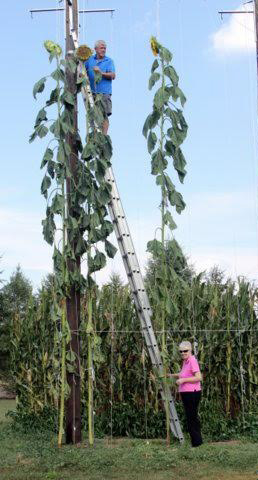
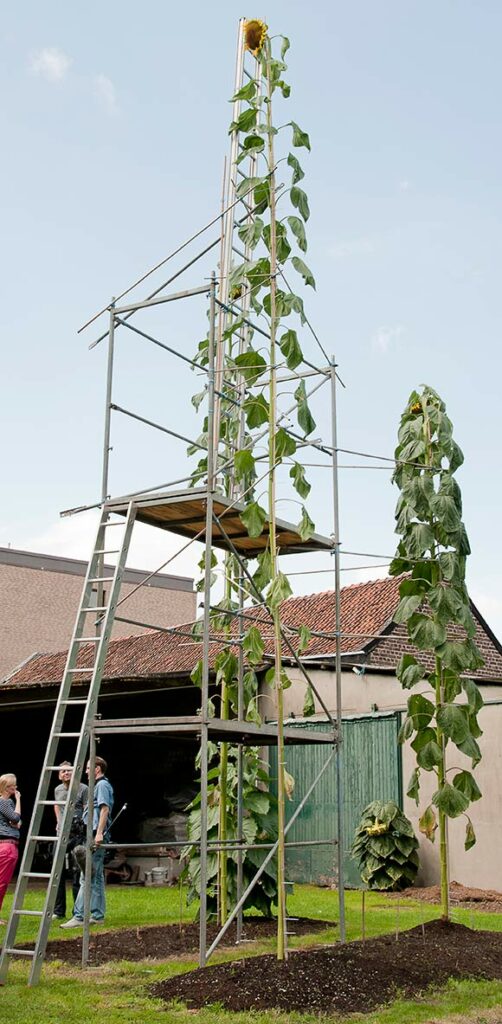

- Sunflowers have a remarkable ability to absorb toxins, including toxic metals and radiation. After nuclear disasters like Chornobyl and Fukushima, scientists plant millions of sunflowers to help the earth recover. Likewise, they are planted in areas with high lead concentrations. Scientifically speaking, they are "hyperaccumulators", meaning that the plant is able to grow in soil or water with very high concentrations of metals, absorbing these metals through their roots and concentrating extremely high levels of metals in their tissues. Plants are thought to develop this ability in part to make them a less tempting snack for herbivores.
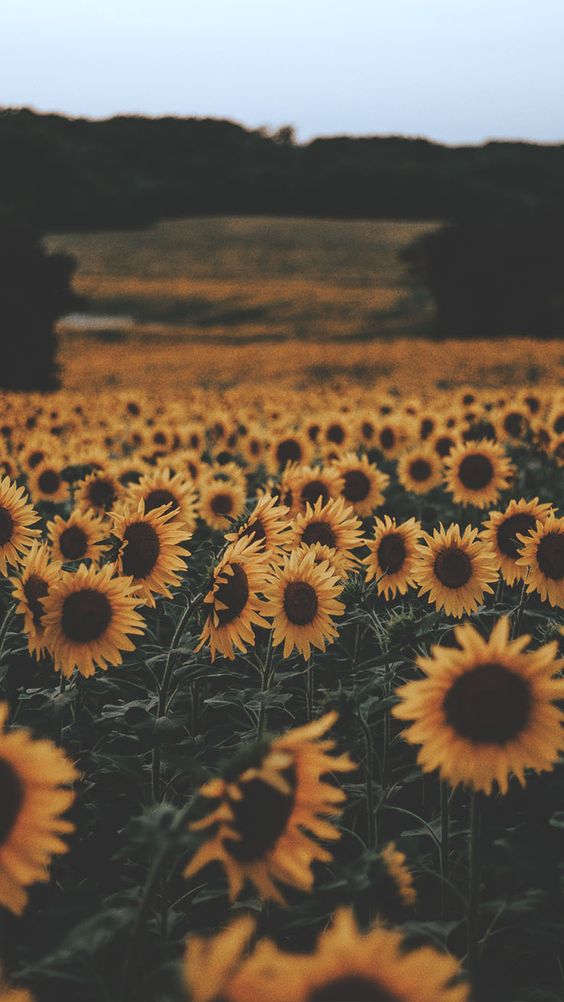
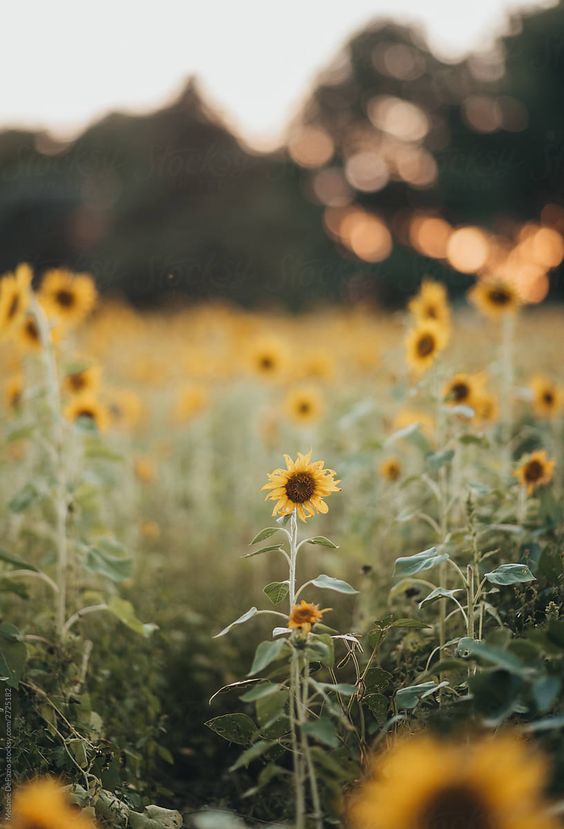

- Sunflowers are made up of many small flowers You might think that each sunflower is just one flower, but each flower head is actually made up of about two thousand florets. These tiny flowers are full of nectar, making them a great treat for bees.
Types of sunflowers
There are two different types of sunflowers; Single-headed and branching. Single-headed is usually larger varieties and produces an edible seed head. They are the result of cultivation and breeding over the centuries to produce a large seed for food and oil. The branching varieties tend to be on the shorter side, but they can have up to 20 flowers per stalk. The branching types are more closely related to the wild types we see today in fields, on roadsides, and in native prairies.
Sunflower Decoration
In autumn, when the days are getting shorter, why not bring the sun indoors? Warm colors instantly add brightness and warmth to any home. Whether you add a vase full of sunflowers in your living room or a single stem by your kitchen sink, it will instantly brighten your day. We at Top-Flowers offer a large selection of beautiful sunflower arrangements if you want to please a loved one or simply brighten up your home.



Sunflower Care
When harvesting fresh sunflowers, it is best to cut the plants early in the morning when the flowers are hydrated and before they have fully opened. If you receive sunflowers as a gift with delivery, check that the water level in the vase is at least 3/4 full with lukewarm water, and add the packet of flower food. Remove any leaves that fall below the water level. Refresh the water in the vase and trim the lower end of the stems a little every three days to extend the life of the flowers. 🙂
